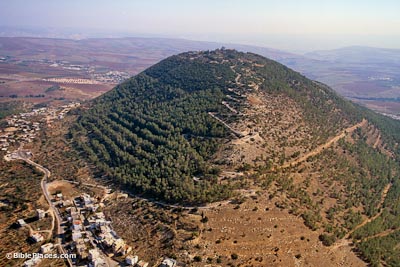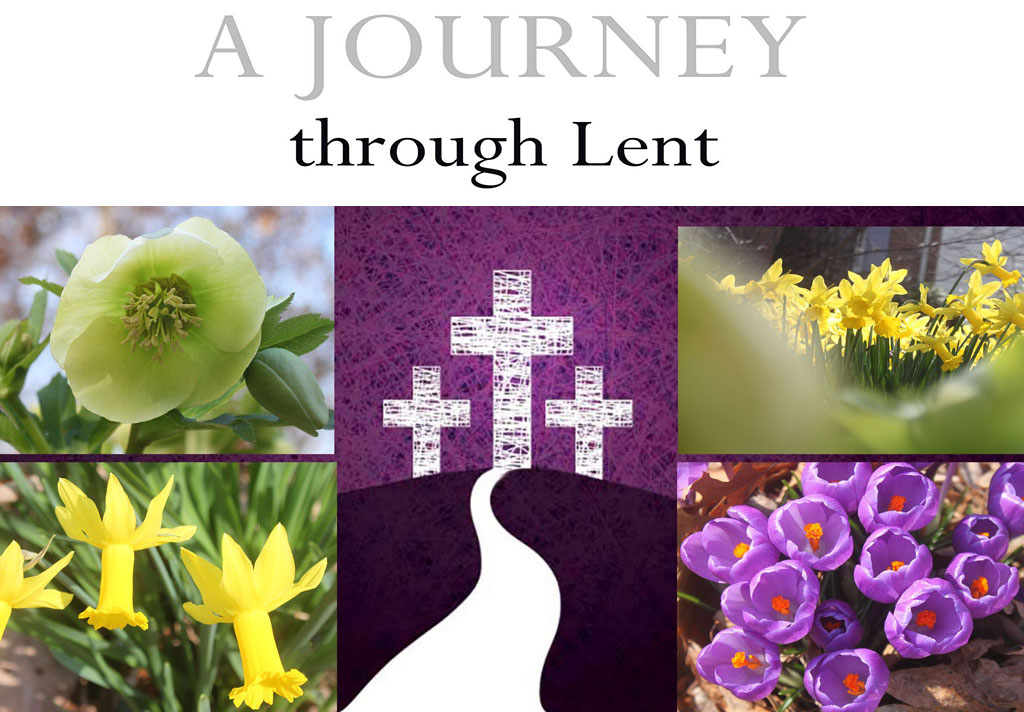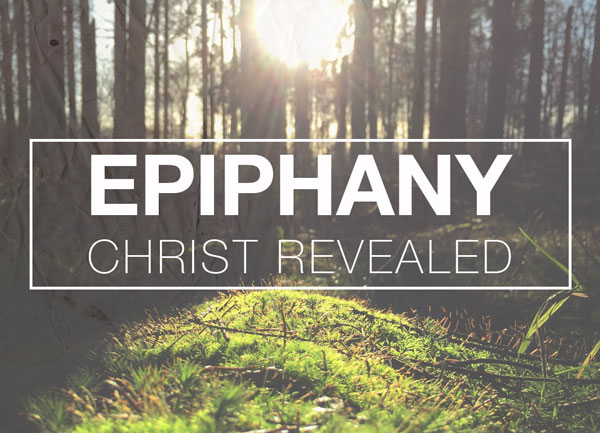Click here to view in a new window.
2024 Sun Feb 11
Voices of the Transfiguration
1. Transfiguration is transformation. No one and no situation is "untransfigurable" – Dawn Hutchings

In his book, God Has A Dream: A Vision of Home for Our Time, Desmond Tutu tells about a transfiguration experience that he will never forget. It occurred when apartheid was still in full swing. Tutu and other church leaders were preparing for a meeting with the prime minister of South Africa to discuss the troubles that were destroying their nation. They met at a theological college that had closed down because of the white government’s racist policies. During a break from the proceedings, Tutu walked into the college’s garden for some quiet time. In the midst of the garden was a huge wooden cross. As Tutu looked at the barren cross, he realized that it was winter, a time when the grass was pale and dry, a time when almost no one could imagine that in a few short weeks it would be lush, green, and beautiful again. In a few short weeks, the grass and all the surrounding world would be transfigured.
As the archbishop sat there and pondered that, he obtained a new insight into the power of transfiguration, of God’s ability to transform our world. Tutu concluded that transfiguration means that no one and no situation is “untransfigurable.” The time will eventually come when the whole world will be released from its current bondage and brought to share in the glorious liberty that God intends.
From SALT -the “high mountain” at the center of Mark’s Gospel.
Mt. Tabor, one in Israel, one possibility for the Transfiguration story.

“Think of this passage itself as a “high mountain” at the center of Mark’s Gospel. On one side, we climb up through stories of Jesus’ healing, liberating ministry. And on the other side, we’ll descend to the cross. Today, we arrive at a clearing on the mountaintop — and from here we can survey both how far we’ve come and the Lenten journey ahead.
“Epiphany concludes today: Jesus has “shown forth” to be a healer and a liberator; a teacher and a shining prophet. The “unclean spirit” has called him “the Holy One of God;” Peter has called him “the Messiah” (Mark 8:29). But most fundamentally and decisively, he is God’s beloved child. His path of love will lead down into the valley, through the dry cinders of Ash Wednesday and the tears of the Via Dolorosa, the Way of Sorrow, all the way to Easter Sunday and the Way of Life.
“Mark’s central point in the Transfiguration story is this: the suffering and death of Jesus may at first appear as an unthinkable, desecrating defeat, but it’s actually a step toward a dramatic, subversive victory. Jesus will now venture into the shadows of death — precisely in order to scatter those shadows once and for all, overcoming them in the end with shimmering light. ”
Rafael’s Transfiguration – the Story of a Painting

Raphael (1483-1520) was a master painter of the Renaissance. Raphael considered the Transfiguration to be his greatest masterpiece though he died before he could finish it at age 37. A student finished it.
In his final delirium he asked to see his painting for the last time. His friends brought it to him, and placed it on the bed in which he died on Good Friday, 1520.
Giorgio Vasari, the sixteenth century Italian painter, writer, historian said of the painting that is was “…the most famous, the most beautiful and most divine…”
The Souper Bowl supports the Village Harvest
The Role of Food Insecurity
| Year | % Food Insecurity |
|---|---|
| 2017 | 10.2 |
| 2018 | 9.9 |
| 2019 | 9.4 |
| 2020 | 7.7 |
| 2021 | 8.1 |
The Souper Bowl helps to fund the Village Harvest which is not budgeted but depends on contributions. Harvest fund levels are affected by trends in food insecurity.
The trends of food insecurity have improved over the last few year as a percentage of the population except for the last year (2021) in the table.
That’s the good news we can all appreciate. However, all groups in the community have not shared in this improvement.
Food insecurity is an economic condition driven by several factors, chief among these is a lack of money. Overall, the economy has been positive in these years accounting for downward trend percentage of food insecurity. There is an underlying second issue. Food insecurity is affected by underlying economic and social disadvantages reflecting racial differences.
From Epiphany to the Transfiguration
February involves the transition betweeen Epiphany and Lent and on that of Lent
Epiphany is about 2 revelations – Christ to the world through the wise men as well as revelation of Christ to us through baptism. On the first Sunday after the Epiphany, we celebrate the Feast of the Baptism of our Lord. His baptism is seen as the primary baptism, the one on which all baptisms follow, the recognition that his followers belong to God as “Christ’s own forever.”
During the three to eight weeks after the Epiphany, we learn in the gospel lectionary readings about Jesus’ miracles of healing and his teachings. This is a continuation of the theme of the revelation of Christ to his followers. “Come Follow Me”. Jesus has not only arrived but through him the kingdom of God as one who fulfills and extends God’s teachings through the Sermon of the Mount. The last Sunday in Epiphany, the transfiguration can be seen as the bridge between Epiphany and Lent.
At the beginning of the Epiphany season, at the Baptism of Jesus, the liturgical color was white. In the Gospel reading in Matthew at his baptism said, “And a voice from heaven said, “This is my Son, the Beloved, with whom I am well pleased.” In the Transfiguration which we will celebrate on Feb. 26, the 8th Sunday after Epiphany, the Gospel of Matthew records, “This is my Son, the Beloved; with him I am well pleased; listen to him!” The liturgical color once again is white.
Transfiguration serves as the culmination, the climax, of Jesus manifesting his glory and his identity as the Son of God. From this point on, Jesus sets out to Jerusalem, to suffer, die and be resurrected. We will see this story during Lent beginning March 1. This same glory he will return to, once he has completed the saving mission for which he came. Coming full circle, we will one day be in life with Christ as “Christ’s own forever.”
Ash Wednesday Links, Feb. 14, 2023
Last Sunday after the Epiphany. The Transfiguration
Coming up

Quick link to Feb, 2024 Lent Calendar
Quick link to March, 2024 Lent Calendar
Recent Articles, Ash Wednesday, 2024
Lent begins Feb. 14 (Ash Wednesday)
The Prelude – Shrove Tuesday pancake supper
Lent Basics
3 key points about Ash Wed
Ash Wed. 2024, 7pm service
Lectionary
Bulletin
The Ash Wed service
Art for Ash Wed
“Letting Go”, Diocese of Atlanta
Conversation about Ash Wed
Lent Stations:Vices & Virtues
Lent at St. Peter’s
Last Sunday after the Epiphany, Feb 11
God’s Garden – The Alleluia Banner, Part 2
Souper Bowl Sunday results
Discretionary Fund donations Feb. 11
Bulletin, 11am
Sermon
Lectionary
Commentary Last Epiphany
Voices of the Transfiguration
Visual Lectionary – Vanderbilt
The Visual Commentary on Scripture: The Transfiguration
Raphael’s Transfiguration
Ministries
The Souper Bowl supports the Village Harvest
Bingo Night Jan 26, 6pm-7:30pm
Lenten Study – The Creeds
Creating the Alleluia Banner
God’s Garden, Feb 4- March 31
Village Harvest Jan., 2024
Sacred Ground, Jan., 2024
Black History Month, Feb., 2024
Black History month
Absalom Jones remembered Feb. 13
Rosa Parks birthday Feb. 4
Visit to Belle Grove, Feb. 2018
A Case for Love
Case for Love Journal – After the Movie
The Way of Love – a summary
How can we walk in the Way of Love?
Bingo Night, Feb 26, 6pm-7:30pm, Port Royal Fire house

Mon., Feb. 26th, Bingo Night 6-7:30PM at Port Royal Fire Department St Peter’s is serving as a Partner in Education with the Caroline County Public Schools.
We will be providing snacks for the Caroline County. If you would like to help, please bring granola bars, individually wrapped bags of trail mix, or small bottles of water and place them in the back pew by Sunday, Feb. 25.
God’s Garden Feb 4 – March 31- The Alleluia!

The next eight Sundays of God’s Garden will include a big project!
During the first few sessions, the class will be designing and decorating a big banner with the word “Alleluia.” The banner will then be displayed in the church until the first Sunday of Lent when it will disappear.
The disappearance of the banner will be a reminder that during Lent the congregation does not end each service with the word “Alleluia,” and this will be a way to introduce lessons about Lent, Palm Sunday, and Easter. And, of course, the banner will re-appear on Easter!
The Season after the Epiphany – What’s it all about ? Focus on the Gospels

The Season after the Epiphany – Epiphany is all about establishing the identity of Jesus. Now that he has been born who is he ? Epiphany continues to define who Jesus is – healer, preacher and the Messiah, the last one comes early in Epiphany and continues.
Epiphany refers to the appearance of Jesus Christ as the savior of the world—of Israel and the Gentiles. For this reason, Epiphany is commonly associated with the visitation of the Magi (or “wise men”), who were almost certainly Gentiles, in Matthew 2:1–12.
We focus on the mission of the church to reach all the peoples of the earth with the great gift of God’s grace in revealing healing truth and light to the world.”
It is very much present oriented. The main idea of Epiphany is that Christ is the light of the world that came at Christmas and now beckons us to travel with Him ths year. The story of the Epiphany is about discovery—following a star to the source of salvation.Epiphany is filled with unexpected revelations that change our minds and ways – we have to be willing to experience them.
Epiphany is our jumping off spot. From the Eucharistic Prayer – “With each new day, you call us to feed the hungry, bring recovery of sight to the blind, liberate the oppressed, heal the broken hearted and bind up their wounds, and keep watch for the dawn of your reign on this earth. ”
